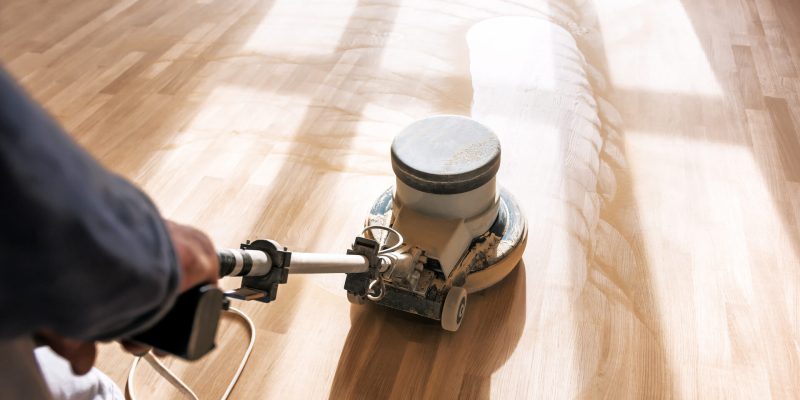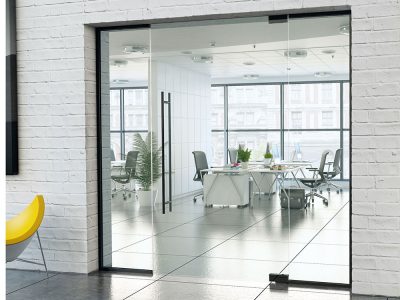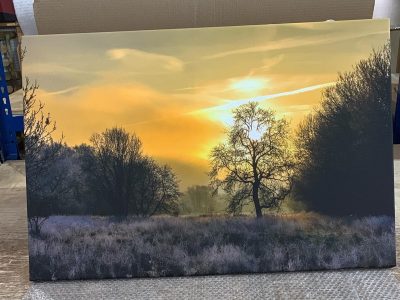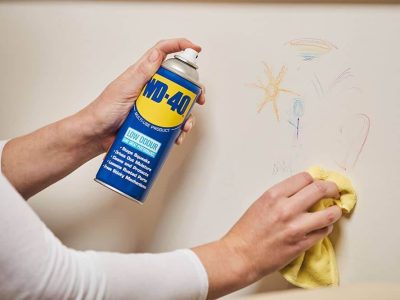Sandblasting, or wood floor refinishing by abrasive blasting, is a method sometimes used to strip away old coatings, stains, or imperfections from hardwood surfaces. Once the wood is exposed and cleaned, the next crucial step is choosing the right finish. The type of finish applied not only determines the floor’s appearance but also its durability, maintenance needs, and resistance to wear.
Here are the most common types of finishes that can be applied after sandblasting hardwood floors.
Oil-Based Finishes
Oil-based finishes have been a traditional choice for hardwood floors for decades.
Pros:
- Rich, warm tones that enhance natural wood grain.
- Extremely durable and long-lasting.
- Excellent penetration for strong protection.
Cons:
- Longer drying times (often 24–48 hours per coat).
- Higher VOC emissions, requiring proper ventilation.
These finishes are ideal for homeowners who prefer a classic look with a resilient protective layer.
Water-Based Finishes
Increasingly popular, water-based finishes offer a modern alternative to oil-based options.
Pros:
- Clear, natural appearance that won’t yellow over time.
- Faster drying times (2–4 hours per coat).
- Lower odor and fewer harmful emissions.
Cons:
- Slightly less durable than oil-based options, though modern formulations are improving.
- May require additional coats for full protection.
Water-based finishes are great for eco-conscious homeowners or those who prefer a lighter, more natural wood color.
Polyurethane Finishes
Polyurethane comes in both oil-based and water-based varieties and is one of the most durable options.
Advantages:
- High resistance to scratches, moisture, and heavy traffic.
- Available in multiple sheens (matte, satin, semi-gloss, gloss).
- Long-lasting protection with minimal maintenance.
This is one of the most popular choices for high-traffic areas like hallways, kitchens, or commercial spaces.
Hardwax Oils
Hardwax oils are a premium finishing option that combine natural oils with protective waxes.
Pros:
- Natural look that enhances wood texture.
- Easy spot-repair without sanding the entire floor.
- Provides a breathable surface that allows wood to expand and contract.
Cons:
- Requires regular maintenance with oil reapplication.
- Less resistant to standing water compared to polyurethane.
This finish is perfect for those who love a more organic and natural aesthetic.
Penetrating Sealers
Penetrating sealers soak deep into the wood, providing protection from the inside out.
Benefits:
- Long-lasting and low-maintenance.
- Preserves the natural look of wood.
- Often eco-friendly and non-toxic.
However, they may not provide as much surface-level shine or gloss as polyurethane or oil finishes.
Stains and Color Options
In addition to clear finishes, homeowners can choose stains to alter the wood’s appearance.
- Light stains create a modern, airy feel.
- Dark stains add richness and elegance.
- Custom colors can match specific design themes.
After sandblasting, the wood’s open grain makes it especially receptive to stains, allowing for deep, even coloring.
Why Professional Application Matters
While sandblasting can prepare hardwood floors for refinishing, applying the finish requires precision. Uneven coats, improper drying, or using the wrong type of finish can compromise results. That’s why it’s best to work with specialists like sablage de plancher Mebesa, who combine expertise with high-quality materials to achieve durable and beautiful finishes tailored to each client’s needs.
Conclusion
The type of finish applied after sandblasting determines not only how hardwood floors look but also how well they perform over time. Options range from traditional oil-based finishes and modern water-based formulas to durable polyurethanes, natural hardwax oils, and penetrating sealers. Stains further expand design possibilities.












Comments